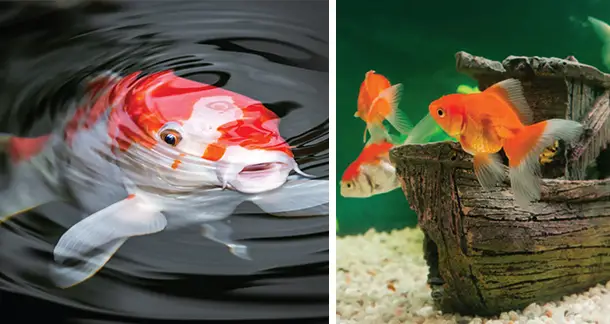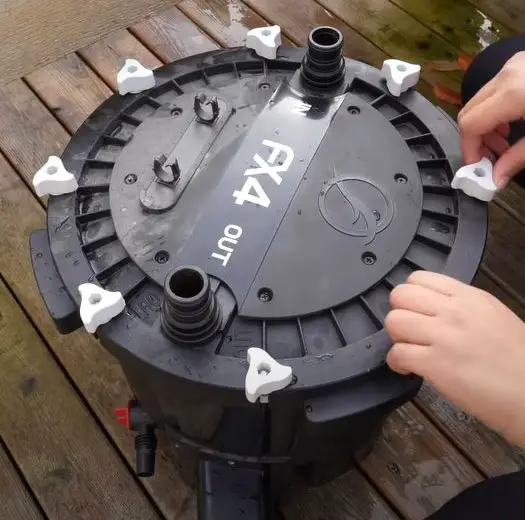How to Know If Your Tank is Ready for Fish?
To know if your tank is ready for fish, you should first check the ammonia and nitrite levels. Ammonia should be 0ppm (parts per million) and nitrite should also be 0ppm. If these levels are not at 0ppm, then you will need to do a water change to bring it down.
Once both of the levels are at 0ppm, you can start adding fish into your tank. You may also want to wait until the pH level stabilizes in your tank before adding any fish as well. Additionally, make sure that all decorations or live plants have been properly cleaned so as not to introduce any disease-causing pathogens into the tank with new inhabitants.
Finally, always add new fish slowly over a period of time instead of all at once so as not to shock them or overcrowd your aquarium too quickly!
- Test the Water Quality: It is important to test your tank’s water quality before introducing fish into it
- Use a liquid testing kit that tests for ammonia, nitrite, and nitrate levels in order to properly assess if your tank is suitable for fish
- Check the pH Level: The pH level of your tank should be between 6
- 5 – 8
- 0 depending on which type of fish you are planning to introduce into it (as different species have different preferred pH levels)
- Test this using a liquid or strip testing kit and adjust as needed with chemicals available at pet stores/online retailers such as aquarium salt or baking soda based on the specific needs of your desired fish species
- Monitor Temperature Levels: Different types of fish prefer different temperature ranges so make sure you check both the current temperature and stability of temperatures in order to ensure they remain within acceptable parameters once introduced into the tank (most tropical freshwater tanks should range from 75-85°F)
- If temperatures get too hot or cold, consider investing in a thermometer and heater/cooler devices accordingly if necessary for maintaining ideal conditions for your chosen species (and remember not all heaters are created equal!)
- 4
- Provide Adequate Filtration System : A good filtration system will help remove toxins from water while also creating oxygenated environments beneficial to aquatic life forms like fish living inside them – invest in one suited specifically towards your size/type of tank setup; do some research beforehand on what might work best! You can also opt for natural methods such as live rocks that provide biological filtration by absorbing waste products from decaying matter & providing an area where beneficial bacteria can develop over time helping maintain healthy balance within ecosystems contained inside these microcosms we call aquariums!
Is Your Fish Tank Really Cycled?
How to Know If Tank is Cycled Without Test
If you want to know if your tank is cycled without testing, there are a few signs you can look out for. The first sign is that the nitrite levels should be close to 0 parts per million (ppm). If the ammonia and nitrate levels have also dropped significantly from their initial readings, this could indicate that your tank has completed cycling.
Additionally, you may observe an increase in beneficial bacteria colonies on the filter media or decorations within the aquarium. Finally, if there are healthy fish living in the aquarium with no signs of stress or illness, then it’s likely that your tank has been successfully cycled.
Signs of a Cycled Aquarium
A cycled aquarium is a healthy, balanced aquatic ecosystem that has gone through the process of cycling. Signs of a cycled aquarium include clear water with no bad odors or discoloration, healthy plants and fish that are active and have good appetites, as well as beneficial bacteria colonies visible in the substrate (gravel). It’s important to remember that regular maintenance such as frequent water changes and filter cleaning will be necessary to keep your tank properly cycled.
How Long Should You Wait before Putting Fish in a New Tank
When setting up a new aquarium, you should wait 24-48 hours before adding fish to the tank. This gives the filter time to cycle and establish beneficial bacteria populations that will help keep the water clean and healthy for your fish. Additionally, this waiting period ensures that any chlorine in tap water is neutralized before adding any aquatic life.
Do You Have to Wait 24 Hours to Put Fish in Tank
When setting up a new fish tank, it is important to wait at least 24 hours before introducing any fish into the tank. This allows time for the chlorine levels in tap water to dissipate, and also allows you to double check that all of your equipment is set correctly and functioning properly. During this waiting period, you should fill the tank with dechlorinated water and make sure your filter system is running correctly.
Taking these steps will help ensure that your new fish have a safe environment in which to live!
If I Have Nitrates is My Tank Cycled
When it comes to determining if your tank has been cycled, nitrate levels are a key indicator. If you have detectable levels of nitrates in the water, then this is an indication that the aquarium’s nitrogen cycle has likely been established. However, it is important to note that having high nitrates does not necessarily mean your tank is fully cycled – it only means that there may be some level of biological filtration happening in the system.
To confirm whether or not your aquarium has completed its cycling process, test for ammonia and nitrite levels as well.
How Long Should You Wait to Feed Fish in a New Tank
When setting up a new fish tank, it is important to wait until the water has had time to cycle and reach the correct pH before introducing any fish. In general, you should wait at least four weeks after your tank has been set up before adding any fish. This will give your tank enough time to establish beneficial bacteria colonies that are necessary for maintaining healthy water quality in an aquarium.
How to Cycle a Fish Tank
Cycling a fish tank is an essential process to create and maintain a healthy environment for your aquatic creatures. It helps to establish beneficial bacteria colonies that will break down metabolic waste and prevent toxic spikes that can harm or even kill your fish. The process involves adding small amounts of ammonia, testing the levels of nitrite, nitrate and pH, as well as performing partial water changes over several weeks until the cycle is complete.
How to Cycle a Tank in 24 Hours
Cycling a tank in 24 hours is possible, but it requires careful monitoring and management of your water parameters. To do this, you should start by testing the ammonia, nitrite, and nitrate levels to see what they are before beginning the cycle process. You can then add an appropriate amount of beneficial bacteria to your tank to help accelerate the cycling process.
Finally, make sure to check your parameters multiple times throughout the day and adjust accordingly as needed until all three readings reach zero or close to it. With proper care and attention during this accelerated cycling process, you should be able to have a cycled aquarium within 24 hours!

Credit: www.petplace.com
How Do I Know If My Tank is Cycled?
Cycling a tank is an essential step in setting up a home aquarium. It helps to establish the necessary biological balance so that your fish can thrive and live happily. But how do you know if your tank is properly cycled?
The most common method of determining if your tank has been successfully cycled is to test the water levels for ammonia, nitrite, and nitrate. If all three are within healthy ranges then it’s safe to assume that your tank has been adequately cycled. Ammonia should be at or near zero parts per million (ppm), nitrite should also be close to zero ppm, and nitrate should range between 5-20 ppm depending on the type of fish you have in the aquarium.
Additionally, signs such as healthy plant growth and active fish behavior may indicate that cycling process went well too!
How Long to Cycle a Tank before Fish?
Cycling a tank before adding fish is an essential step to keeping your fish healthy and happy. Cycling involves allowing the aquarium environment to become established with beneficial bacteria that break down waste, so it can take up to 6 weeks for this process to be completed. To begin cycling, you’ll need to set up the aquarium with substrate (gravel or sand) and decorations, as well as add dechlorinated water.
You may also want to add a filter media from an existing tank into the new one in order to introduce some of the beneficial bacteria that will help cycle your tank. Next, you’ll need something organic such as raw shrimp or flakes of fish food which will provide ammonia for these bacteria colonies until they are fully established and ready for live fish inhabitants. During this period you should monitor your water parameters such as pH levels closely using a test kit every few days until ammonia has been converted completely into nitrate by about week 4-6; only then is it safe enough for introducing any type of aquatic life into your aquarium setup!
Conclusion
In conclusion, setting up an aquarium is a fun and rewarding experience. Taking the time to properly prepare your tank will help ensure that your fish remain healthy and happy in their new home. By following these simple steps, you can make sure that your tank is ready for fish before they’re added.
With patience and dedication, you’ll be able to enjoy a vibrant aquatic ecosystem in no time!






